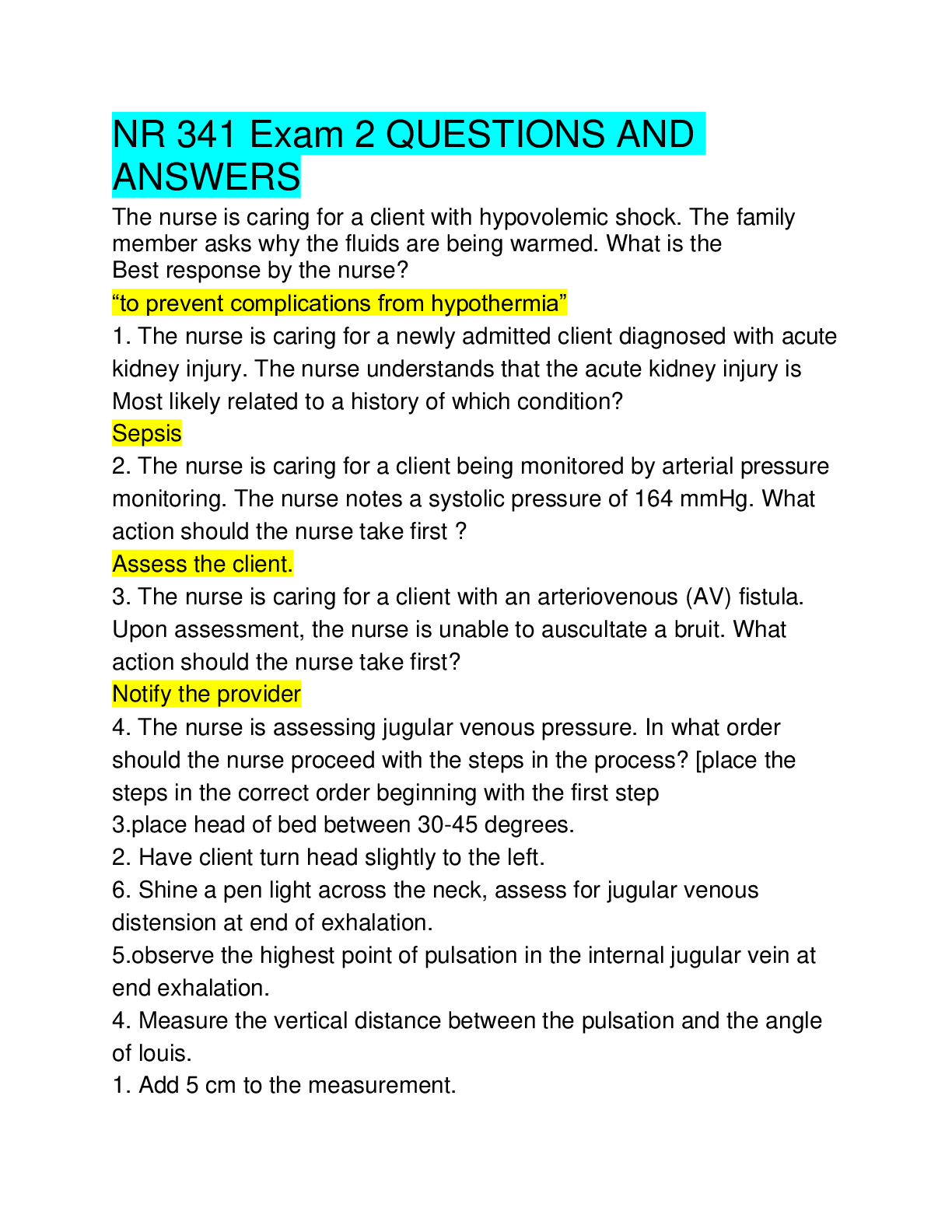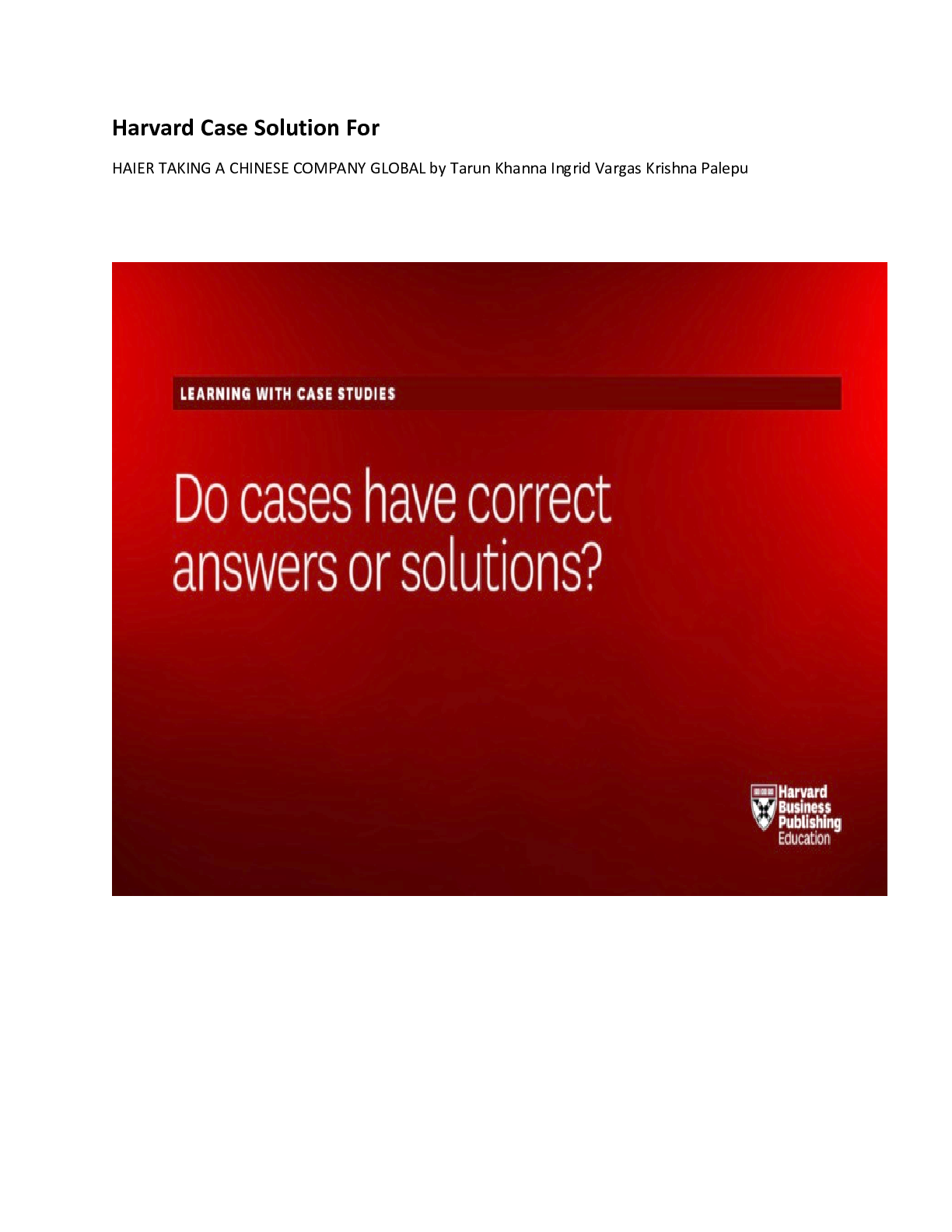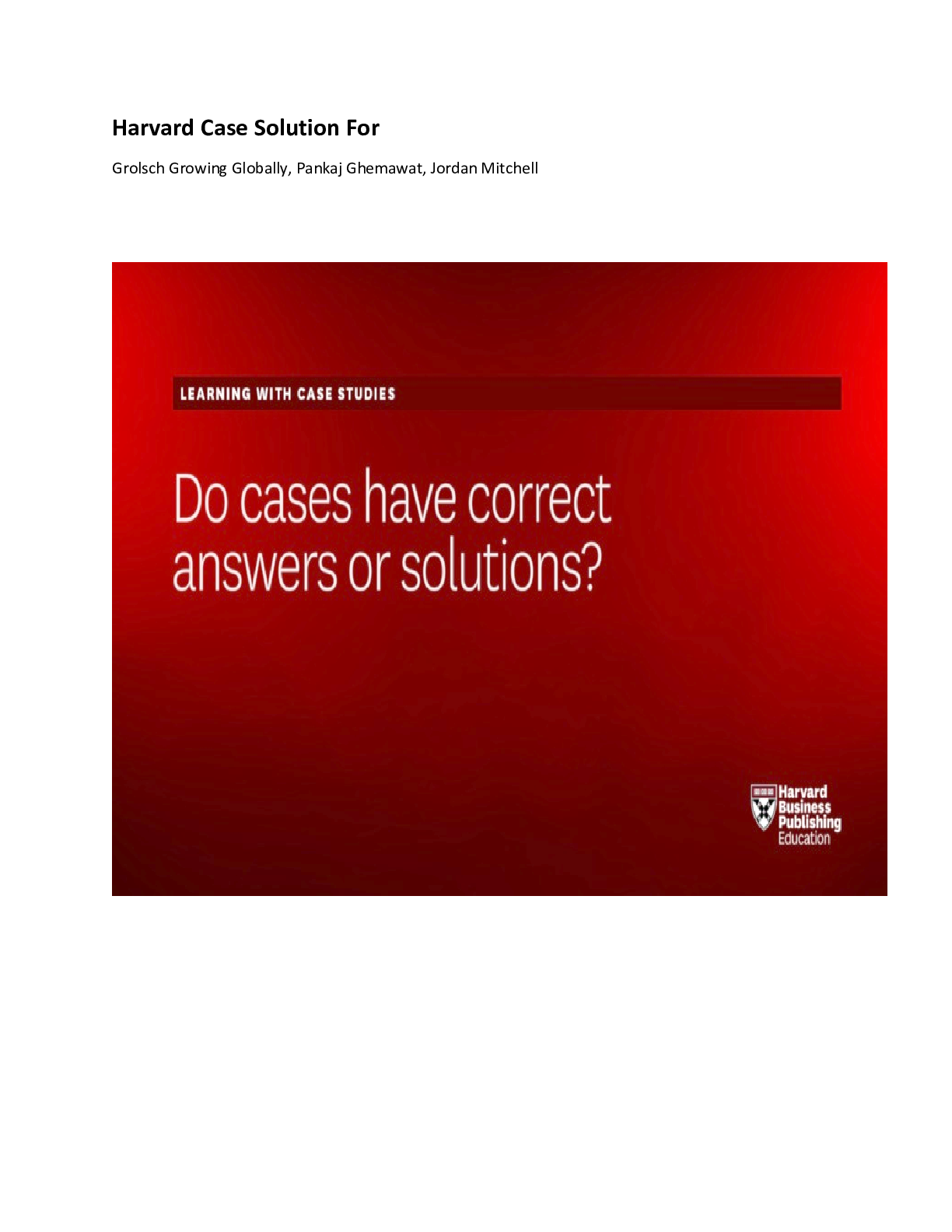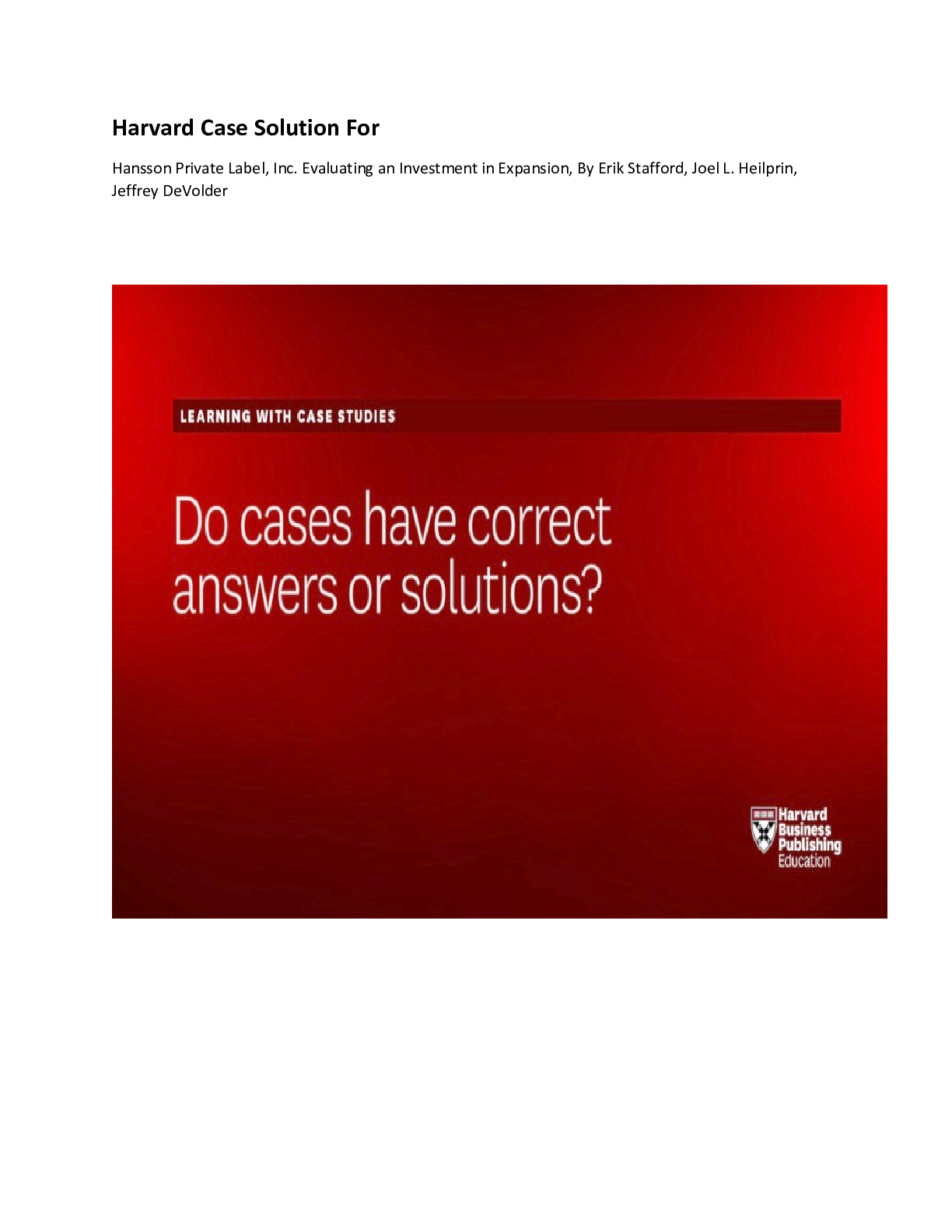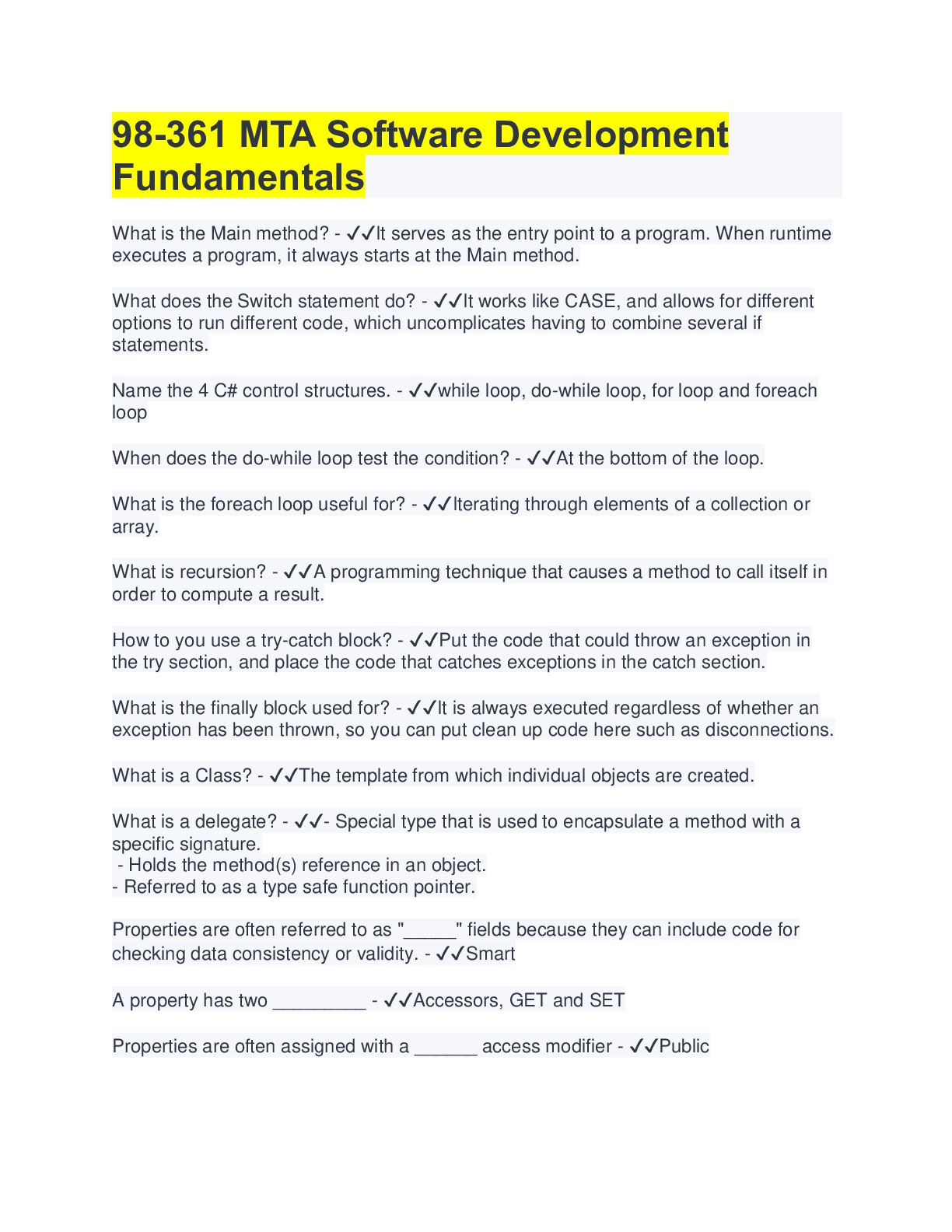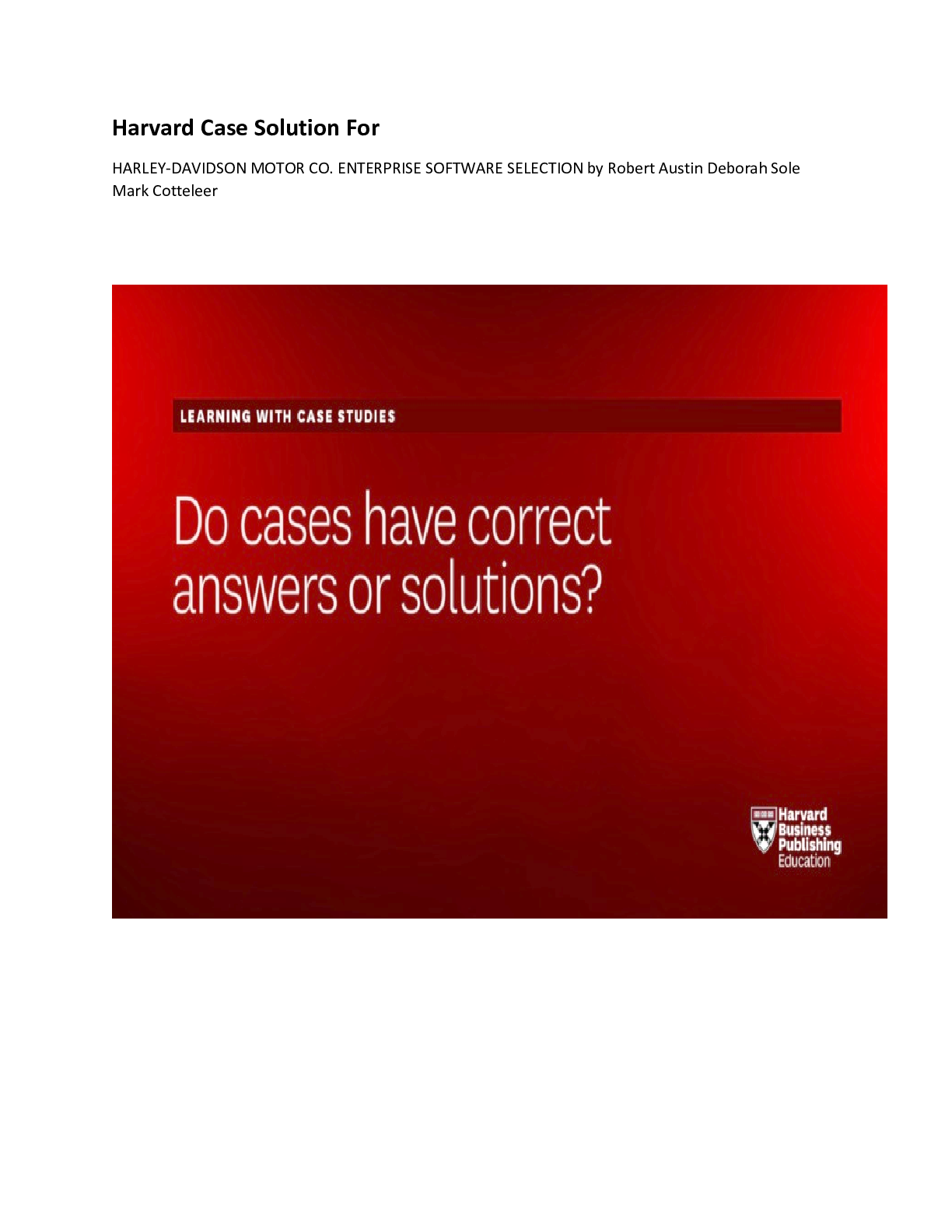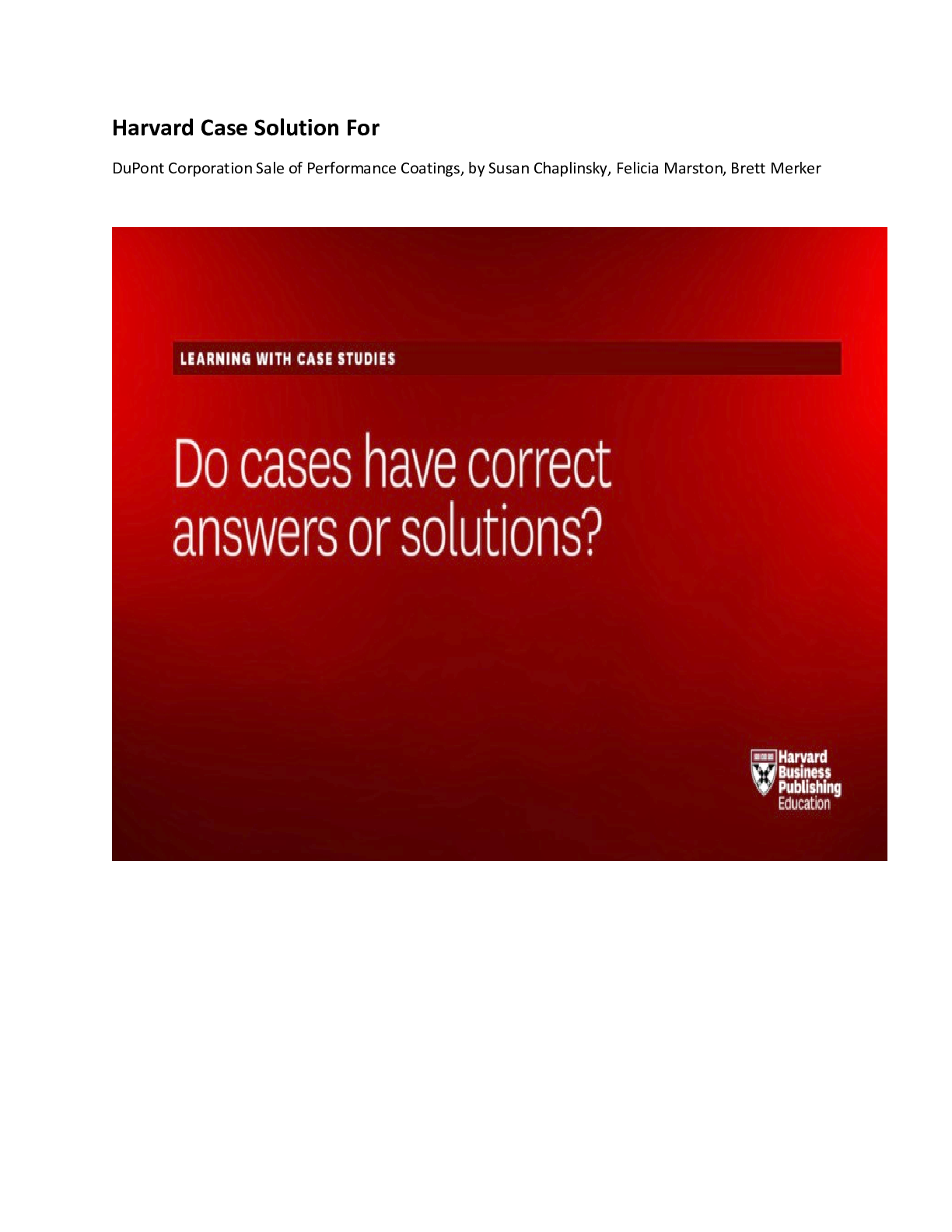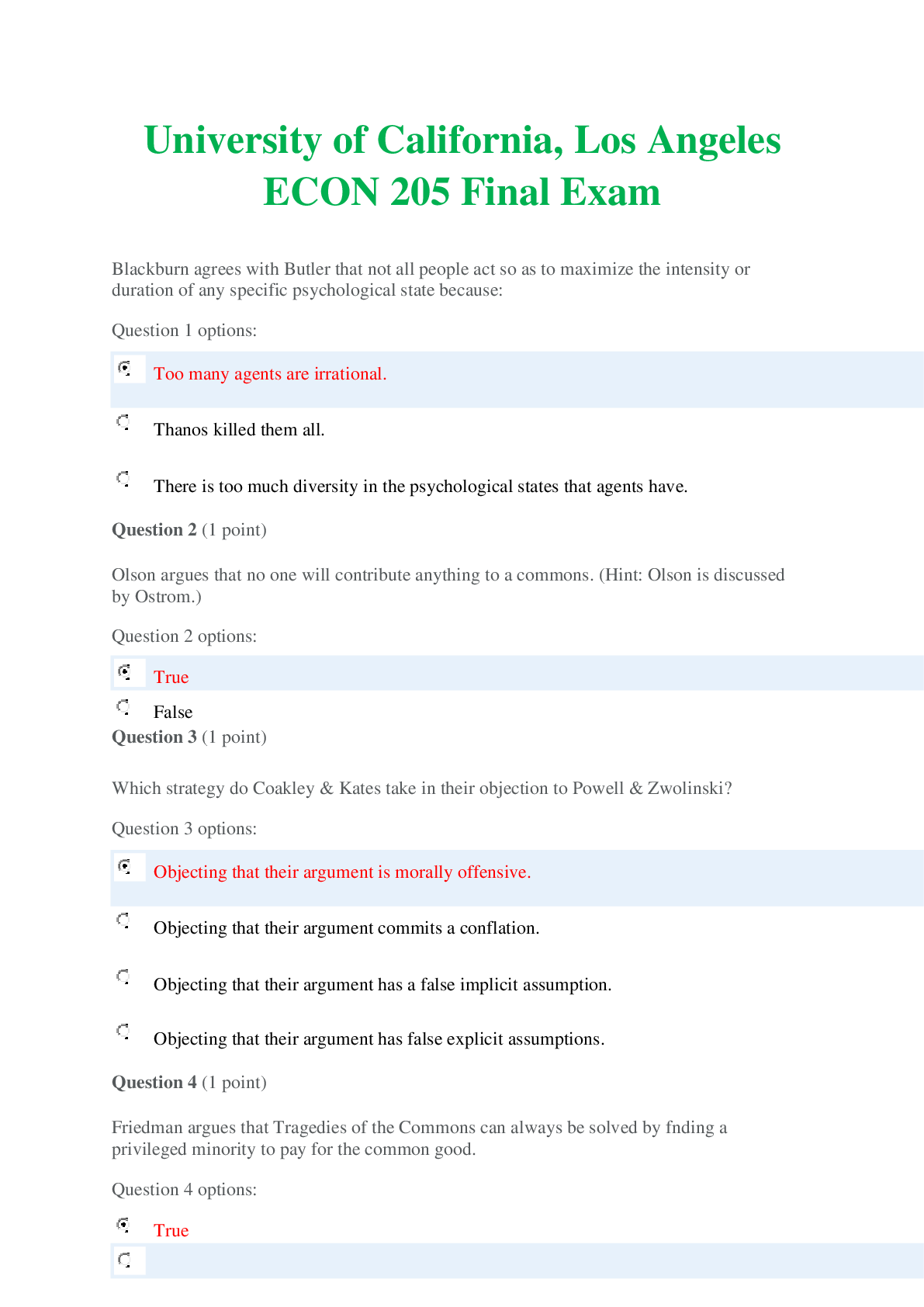NURS 6531N Final Exam 4 Questions And Answers Latest Grade A
Document Content and Description Below
NURS 6531N Final Exam 4 with Answers 1. Central obesity, “moon” face, and dorsocervical fat pad are associated with: 2. An elderly man is started on lisinopril and hydrochlorhiazide for hyperten... sion. Three days later, he returns to the office complaining of left great toe pain. On exam, the nurse practitioner notes an edematous, erythematous tender left great toe. The likely precipitant of this patient’s pain is: 3. The most effective treatment of non-infectious bursitis includes:Conservative treatment includes rest, cold and heat treatments, elevation, administration of nonsteroidal anti-inflammatory drugs (NSAIDs), bursal aspiration, and intrabursal steroid injections 4. What conditions must be met for you to bill “incident to” the physician, receiving 100% reimbursement from Medicare? 5. Which of the following is not a risk factor associated with the development of syndrome X and type 2 diabetes mellitus? 6. Which of the following is not a common early sign of benign prostatic hyperplasia (BPH)? 7. Steve, age 69, has gastroesophageal reflux disease (GERD). When teaching him how to reduce his lower esophageal sphincter pressure, which substances do you recommend that he avoid? 8. Which drug category contains the drugs that are the first line Gold standard therapy for COPD? 9. The most commonly recommended pharmacological treatment regimen for low back pain (LBP) is: 10. Which of the following is not appropriate suppression therapy for chronic bacterial prostatitis? 11. A patient presents with dehydration, hypotension, and fever. Laboratory testing reveals hyponatremia, hyperkalemia, and hypoglycemia. These imbalances are corrected, but the patient returns 6 weeks later with the same symptoms of hyperpigmentation, weakness, anorexia, fatigue, and weight loss. What action(s) should the nurse practitioner take? 12. You are assessing a patient after a sports injury to his right knee. You elicit a positive anterior/posterior drawer sign. This test indicates an injury to the: he 13. A 32 year old female patient presents with fever, chills, right flank pain, right costovertebral angle tenderness, and hematuria. Her urinalysis is positive for leukocytes and red blood cells. The nurse practitioner diagnoses pyelonephritis. The most appropriate management is: 14. A middle-aged man presents to urgent care complaining of pain of the medial condyle of the lower humerus. The man works as a carpenter and describes a gradual onset of pain. On exam, the medial epicondyle is tender and pain is increased with flexion and pronation. Range of motion is full The most likely cause of this patient’s pain is: epicondylitis 15. The best test to determine microalbuminuria to assist in the diagnosis of diabetic neuropathy 16. What is the first symptom seen in the majority of patients with Parkinson’s disease? 17. The most commonly recommended method for prostate cancer screening in a 55 year old male is: 18. Martin, age 24, presents with an erythematous ear canal, pain, and a recent history of swimming. What do you suspect? 19. Which of the following symptoms suggests a more serious cause of back pain? 20. A patient taking levothyroxine is being over-replaced. What condition is he at risk for? 21. Which of the following is the most common cause of low back pain? 22. Which is the most common cause of end-stage renal disease in the United States? 23. A 77-year-old female presents to the office complaining a sudden swelling on her right elbow. She denies fever, chills, trauma, or pain. The physical exam reveals a non-tender area of swelling over the extensor surface over the right elbow with evidence of trauma or irritation. The nurse practitioner suspects: 24. A 60 year old female patient complains of sudden onset unilateral, stabbing, surface pain in the lower part of her face lasting a few minutes, subsiding, and then returning. The pain is triggered by touch or temperature extremes. Physical examination is normal. Which of the following is the most likely diagnosis? 25. Beth, age 49, comes in with low back pain. An x-ray of the lumbosacral spine is within normal limits. Which of the following diagnoses do you explore further? 26. A patient exhibits extrapyramidal side effects of antipsychotic medications. Which of the following symptoms would lead you to look for another diagnosis? 27. Phalen’s test, 90°wrist flexion for 60 seconds, reproduces symptoms of: 28. The most common cause of elevated liver function tests is: 29. Reed-Sternberg B lymphocytes are associated with which of the following disorders: 30. Which of the following is a potential acquired cause of thrombophilia? 31. A 75-year-old female is diagnosed with primary hyperparathyroidism and asks the nurse practitioner what the treatment for this disorder is. The nurse practitioner explains: 32. A 25 year old overweight patient presents with a complaint of dull achiness in his groin and history of a palpable lump in his scrotum that “comes and goes”. On physical examination, the nurse practitioner does not detect a scrotal mass. There is no tenderness, edema, or erythema of the scrotum, the scrotum does not transilluminate. What is the most likely diagnosis? 33. Dave, age 38, states that he thinks he has an ear infection because he just flew back from a business trip and feels unusual pressure in his ear. You diagnose barotrauma. What is your next action? 34. The physiological explanation of syncope is: 35. A 20 year old male patient complains of “scrotal swelling.” He states his scrotum feels heavy, but denies pain. On examination, the nurse practitioner notes transillumination of the scrotum. What is the most likely diagnosis?hydrocele 36. A 32 year old male patient complains of urinary frequency and burning on urination for 3 days. Urinalysis reveals bacteriuria. He denies any past history of urinary tract infection. The initial treatment should be: nclude nitrofurantoin monohydrate/macrocrystals, trimethoprim-sulfamethoxazole (TMP-SMX), or fosfomycin. trimethoprim and sulfamethoxazole 37. Diagnostic radiological studies are indicated for low back pain: 38. An 81-year-old female is diagnosed with type 2 diabetes. When considering drug therapy for this patient, the nurse practitioner is most concerned with which of the following side effects? 39. The diagnosis of human papilloma virus (HPV) infection in males is usually made by: 40. Which history is commonly found in a patient with glomerulonephritis? 41. A patient complains of generalized joint pain and stiffness associated with activity and relieved with rest. This patient history is consistent with which of the following disorders? 42. The most common presentation of thyroid cancer is: 43. The obligatory criteria for diagnosis of muscular dystrophy (MD) are: 44. The diagnosis which must be considered in a patient who presents with a severe headache of sudden onset, with neck stiffness and fever, is: 45. A 60 year old male patient with multiple health problems presents with a complaint of erectile dysfunction (ED). Of the following, which medication is most likely to be causing the problem? 46. A 72 year old patient exhibits sudden onset of fluctuating restlessness, agitation, confusion, and impaired attention. This is accompanied by visual hallucinations and sleep disturbance. What is the most likely cause of this behavior? 47. Which of the following set of symptoms should raise suspicion of a brain tumor? 48. The cornerstone of treatment for stress fracture of the femur or metatarsal stress fracture is: relative rest-that being the cessation of the offending activity for a period of time until the irritation is eliminated, pain is gone and the bone is given a chance to heal. 49. Sally, a computer programmer, has just been given a new diagnosis of carpal tunnel syndrome. Your next step is to: 50. Marsha presents with symptoms resembling both fibromyalgia and chronic fatigue syndrome, which have many similarities. Which of the following is more characteristic of fibromyalgia? 51. The cardinal sign of infectious arthritis is: 52. Diagnostic evaluation for urinary calculi includes: 53. A 15 year-old female patient is 5 feet tall and weighs 85 pounds. You suspect anorexia and know that the best initial approach is to: 54. A 63-year-old man presents to the office with hematuria, hesitancy, and dribbling. Digital rectal exam (DRE) reveals a moderately enlarged prostate that is smooth. The PSA is 1.2. What is the most appropriate management strategy for you to follow at this time? 55. A positive drawer sign supports a diagnosis of: 56. A 14 year old female cheerleader reports gradual and progressive dull anterior knee pain, exacerbated by kneeling. The nurse practitioner notes swelling and point tenderness at the tibial tuberosity. X-ray is negative. What is the most likely diagnosis? 57. Jack, age 55, comes to the office with a blood pressure of 144/98 mm Hg. He states that he did not know if it was ever elevated before. When you retake his blood pressure at the end of the exam, it remains at 144/98. What should your next action be?Answer: stage 2 hypertension (lifestyle change, and medication 58. Martin is complaining of erectile dysfunction. He also has a condition that has reduced arterial blood flow to his penis. The most common cause of this condition is: 59. Successful management of a patient with attention deficit hyperactivity disorder (ADHD) may be achieved with: 60. What diabetic complications result from hyperglycemia? 61. In which of the following presentations is further diagnostic testing not warranted? 62. The most common symptoms of transient ischemic attack (TIA) include: 63. Establishment of a definitive diagnosis of osteomyelitis requires: 64. Which of the following is the most common causative organism of nongonococcal urethritis? 65. A 30 year old female patient presents to the clinic with heat intolerance, tremors, nervousness, and weight loss inconsistent with increased appetite. Which test would be most likely to confirm the suspected diagnosis? 66. Potential causes of hypocalcemia include which of the following? 67. Which of the following is a contraindication for metformin therapy? 68. The organism most often associated with prostatitis is: 69. The most effective intervention(s) to prevent stroke is (are): 70. What is the most commonly abused substance? 71. An obese hyperlipidemic patient, newly diagnosed with type 2 diabetes mellitus, has fasting glucose values 180 to 250 mg/Dl. What is the most appropriate initial treatment to consider? 72. Prolonged PT suggests: 73. A patient presenting for an annual physical exam has a BMI of 25 kg/m2 This patient would be classified as: [Show More]
Last updated: 2 years ago
Preview 1 out of 31 pages
Buy this document to get the full access instantly
Instant Download Access after purchase
Buy NowInstant download
We Accept:

Reviews( 0 )
$15.00
Can't find what you want? Try our AI powered Search
Document information
Connected school, study & course
About the document
Uploaded On
Jan 23, 2021
Number of pages
31
Written in
Additional information
This document has been written for:
Uploaded
Jan 23, 2021
Downloads
0
Views
98


